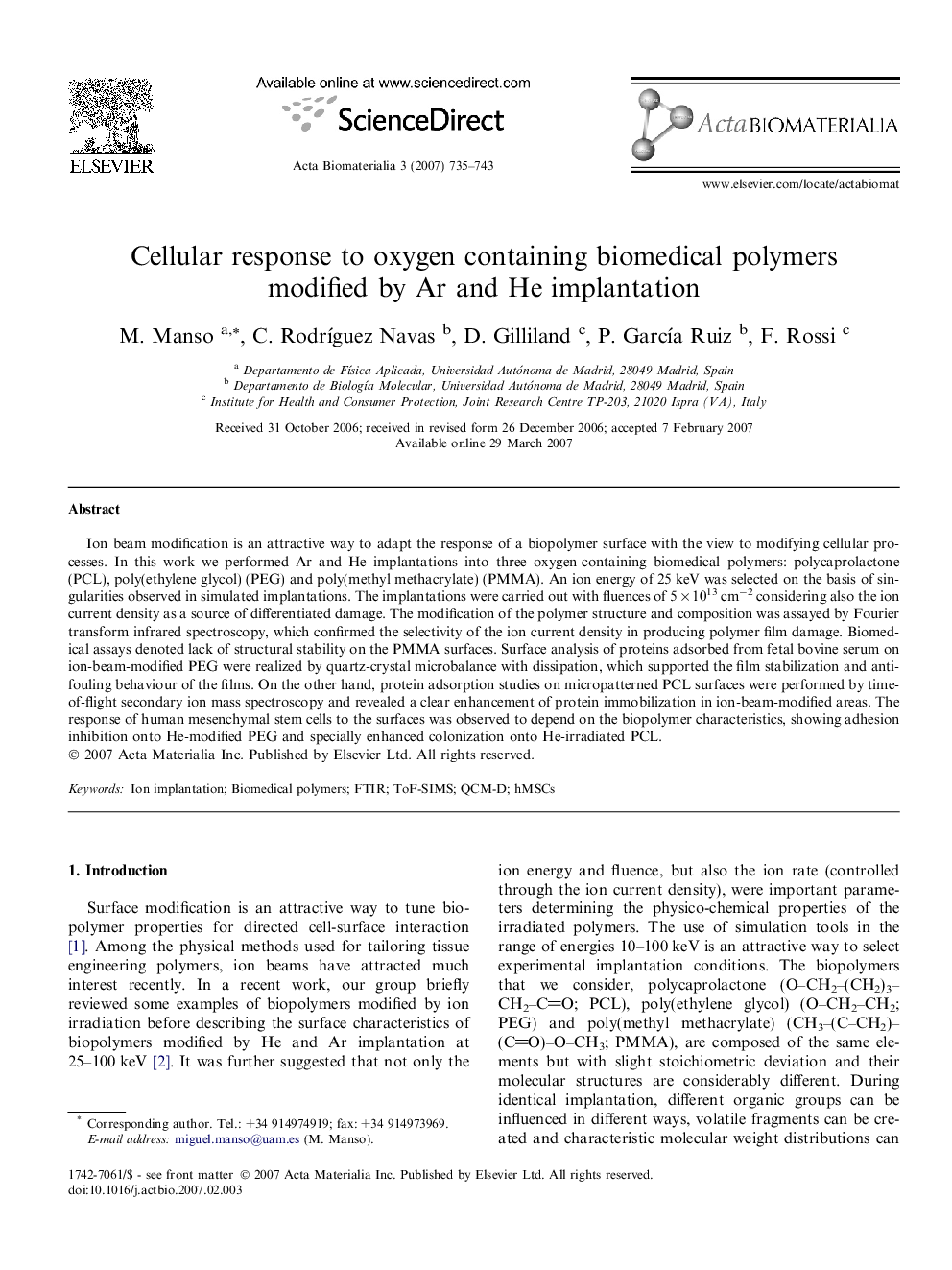| Article ID | Journal | Published Year | Pages | File Type |
|---|---|---|---|---|
| 2206 | Acta Biomaterialia | 2007 | 9 Pages |
Ion beam modification is an attractive way to adapt the response of a biopolymer surface with the view to modifying cellular processes. In this work we performed Ar and He implantations into three oxygen-containing biomedical polymers: polycaprolactone (PCL), poly(ethylene glycol) (PEG) and poly(methyl methacrylate) (PMMA). An ion energy of 25 keV was selected on the basis of singularities observed in simulated implantations. The implantations were carried out with fluences of 5 × 1013 cm−2 considering also the ion current density as a source of differentiated damage. The modification of the polymer structure and composition was assayed by Fourier transform infrared spectroscopy, which confirmed the selectivity of the ion current density in producing polymer film damage. Biomedical assays denoted lack of structural stability on the PMMA surfaces. Surface analysis of proteins adsorbed from fetal bovine serum on ion-beam-modified PEG were realized by quartz-crystal microbalance with dissipation, which supported the film stabilization and anti-fouling behaviour of the films. On the other hand, protein adsorption studies on micropatterned PCL surfaces were performed by time-of-flight secondary ion mass spectroscopy and revealed a clear enhancement of protein immobilization in ion-beam-modified areas. The response of human mesenchymal stem cells to the surfaces was observed to depend on the biopolymer characteristics, showing adhesion inhibition onto He-modified PEG and specially enhanced colonization onto He-irradiated PCL.
